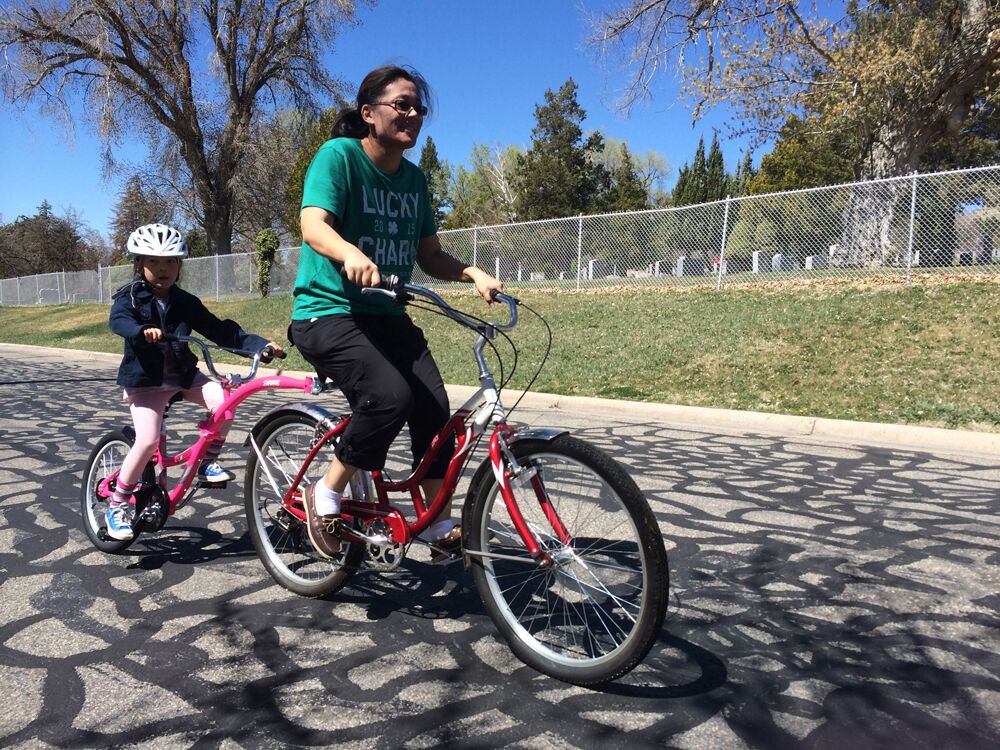I was talking with a friend at church who, I had learned, rides his bike to work. While speaking about his commute, he said to me, “But I’m not a real cyclist.” He went on to say that he did not have a fancy bike or all the gear, to which I replied, “But you ride a bike, right? ”

It is a curious perception, that you have to have a nce bike, and wear lycra and colorful jerseys to be a “cyclist”. It would be like saying you don’t have a nice car and only drive to get places and are therefore not really a motorist. Trying running that by a police officer who has just pulled you over.
The fact is, if you ride a bike, for whatever reason and with whatever frequency, you are a cyclist. A child who rides his bike to go to school or to visit his friends is a cyclist. As is the transient who rides a bike to simply get around. So is the person who forsakes a car for economic, environmental or other reasons and uses a bicycle for transportation. The LDS missionaries who ride bikes to appointments are cyclists. And so is my friend at church.
Indeed, these people make up the greater cycling population. I received an email from Ian Scharine, a fellow SLCBAC (Salt Lake County Bicycle Advisory Committee) member with a link to a recent article entitled, “Memo to Cities: Most Cyclists Aren’t Urban Hipsters” put out by the Kinder Institute for Urban Research. In decrying the perception of cyclists as “cool kid urban hipsters” and the “urban chic”, the article makes the point that the bulk of the cycling population are “invisible cyclists”, that is, those cyclists “for whom biking isn’t an environmental cause or a response to an urban trend but a means of transportation that’s cheaper than a car and faster than walking.”
[Editor’s Note: To read the entire article: http://urbanedge.blogs.rice.edu/2015/10/20/memo-to-cities-most-cyclists-arent-urban-hipsters/#.VjeXOCvuMf7]
That article was focused on the failure of cycling advocates to consider and include these “invisible cyclists” in their advocacy efforts. Ian forwarded this article to those of us involved in local advocacy here in Salt Lake County for our consideration. Fortunately, our major urban center, Salt Lake City, as pointed out by Rob MacLeod in replying to this article, has developed a cycling infrastructure that has not forgotten this demographic. “I see lots of bike lanes also being used by functional anyclists (or whatever one wishes to call this demographic). Our bike lanes serve predominantly the downtown core area, go close by shelters and other facilities of interest to folks in need.”
Indeed, these “invisible cyclists” don’t ride nice bikes or wear lycra. Though we may desire otherwise, most don’t wear helmets or use lights. They just use their bikes to get somewhere.
As a SLCBAC committee member, I can attest that Salt Lake County, under the leadership of Mayor Ben McAdams, and our committee, are also well aware of the need for long-term planning for cycling as an important and necessary form of transportation. Changing the general public perception of, and public policy and legislation for, cycling and cyclists, is a necessary part of making that happen.
As I have related before, thanks to my daughter’s employment with the Foreign Service and her resulting postings around the world, I been able to ride and observe cycling in many foreign cities. One of my most enduring experiences was in Amsterdam. There it was brought home to me how broad a group the term “cyclist” encompasses. I saw thousands of people of people on very journeyman bikes (which, curiously, though klunky and heavy, have themselves become chic in some urban areas) on the streets. There were people with children in carriers, men in suits, ladies in stylish dresses, people with their groceries in panniers, and workers carting around their tools, i.e., people simply on their bikes to run errands or get somewhere.
I will confess: I am an urban cyclist. I don’t need to ride to get anywhere. I am blessed to be able to afford and use a car for my transportation needs. But I ride for fun, for the environment, for exercise and for my physical and mental health. When I ride to work, it is primarily for those reasons, and to save money and wear on my cars.
But I get that I, and others like me, are only a small portion of the cycling demographic. While I may share a sense of community with other cyclists who ride for the same reasons I do, I doubt the kid riding her bike to school, the blue collar guy riding his bike to work, or even my friend at church, share that same sense of community with me. We are all cyclists. But like motorists, we are not all one community, but rather a demographic.
That is the perception that needs to change. It needs to change with the public and with the policy makers. And it needs to change within the cycling community. We all need to recognize that anyone on a bike, whatever the reason, is a cyclist.

